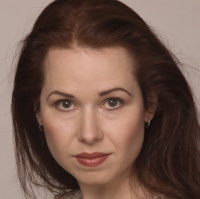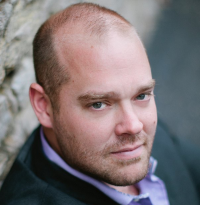
Sunday, May 7, 2023 • 7:00 p.m.
Benaroya Hall (200 University St)
Harmonia Orchestra & Chorus
William White, conductor
Kimberly E. Jones, soprano
Sarah Mattox, mezzo-soprano
Brendan Tuohy, tenor
Michael Preacely, baritone
Columbia Choirs of Metropolitan Seattle
Cantabile Vocal Ensemble • Katrina Turman, conductor
Concord Chamber Choir • Giselle Wyers, conductor
Program
Carlos Garcia (*1991)
Vast Array
Florence Price (1887–1953)
Song of Hope [Northwest premiere]
— intermission —
Ludwig van Beethoven (1770–1827)
Symphony No. 9 in D minor, Op. 125 (“Choral”)
About the Concert
Our season closes with Beethoven’s transcendental ninth symphony, a work that broke new ground in many respects, not the least of which is that, in it, Beethoven put his own music in dialogue with itself, recalling several passages of earlier movements as a prelude to the great “Ode to Joy” theme.
Before the “Ode to Joy,” we’ll present the Northwest premiere of a piece by Florence Price, her Song of Hope for chorus, soloists and orchestra, only recently rediscovered at her country home in Illinois. The concert opens with a reprise performance of a 2019 Harmonia commission, Carlos Garcia’s Vast Array.
Maestro’s Prelude
Picture it: Bethesda, 1996. An angsty teen with necklength hair thrashes around his suburban bedroom, the most intense music he’s ever heard blasting from his stereo. Over the course of an hour, the music moves from demonic metal to orgasmic euphoria; it’s a drug, and now that he’s had a taste, he’ll spend the rest of his life chasing it.
Reader, that teen was me. And that music was Beethoven’s ninth symphony.
This vignette, although entirely true (ask my mother — she’s here tonight), understates the profundity of my love for this piece, this most glorious, epic masterwork that encompasses all of human emotion and musical expression. And of course, I’m not alone: it has defined greatness in music since its 1824 premiere, 199 years ago this evening. Johannes Brahms spent 20 years working on his first symphony due to his deferential awe of Beethoven’s ninth. The CD was (supposedly) designed to play for 74 minutes so that a recording of the ninth could fit on a single disc.
It has been said that Mozart wrote music for humans while Beethoven wrote music for humanity. As far as individual humans were concerned, Beethoven could be quite unreasonable and this symphony remains as challenging now as it was in the early 19th century. The woodwinds must hold unbroken lines for what seem like minutes at a time, the choral sopranos have to sustain a high A for 12 bars, and the strings must lash away at their instruments as if they were percussionists.
Many of you have probably come to our concert this evening to hear the choral finale to this symphony, the “Ode to Joy,” and rightfully so. This is the most famous part of the work and also the most fascinating. What I find so intriguing is Beethoven’s attitude toward the text, Friedrich Schiller’s poem An die Freude. This poem is a not–particularly distinguished bit of Masonic-lodge lyricism meant to be a drinking song, but it clearly sparked something in Beethoven’s imagination. His music isn’t so much a setting of the text as a symphonic edifice built upon the philosophical ideas in the poem. (If you want to hear a straightforward setting, listen to Franz Schubert’s version — it’s really great!)
Beethoven uses the text as a way for the music to “talk to itself,” and that’s why it makes such an excellent conclusion to this season that has been all about dialogue. Of course, there’s more to tonight’s concert than just Beethoven! The first two works on the program are real gems that you will not hear performed anywhere else in these parts. (Well … not yet, anyway!) A work that we commissioned in 2019 from our friend Carlos Garcia
opens the concert — it’s a real cinematic thrill ride — and is followed by the regional premiere of Song of Hope by Florence Price, a work that, like Beethoven’s ninth, hopes for a future suffused with love.
Thank you for being a Freund,
William White
About the Soloists

Soprano Kimberly E. Jones is an alumna of the Ryan Opera Center with Lyric Opera of Chicago. Her performances with Lyric include Margru in the world premiere of Anthony Davis’ Amistad, Olga in Fedora, Princess Xenia in Boris Godunov, Pedro in Don Quichotte, and the spitfire Despina in student matinee performances of Così fan tutte. She portrayed the cunning Laetitia in The Old Maid and the Thief with the Ryan Opera Center and appeared in Lyric’s “Opera in the Neighborhood,” with performances including Rosina in The Barber of Seville and the title role of Cenerentola. She has also appeared at Grant Park as Zerlina (Don Giovanni) and Adele (Die Fledermaus), and on WFMT’s Live from Studio One. Appearances outside of Chicago have included Clara in Houston Grand Opera’s international production of Porgy and Bess, for which she was nominated for an NAACP Award for Best Supporting Actress. Ms. Jones soloed in Philip Glass’ Symphony No. 5 at the Gewandhaus, in Leipzig, under the direction of Dennis Russell Davies, and was one of four Ryan Opera Center artists showcased in a series of concerts at the Châtelet in Paris. She captivated audiences in her Alice Tully Hall debut with the Little Orchestra Society and appeared with Leon Williams at the Bruno Walter Auditorium at Lincoln Center for an evening of Porgy and Bess solos and duets. The recipient of numerous awards, Ms. Jones is on the voice faculty at Roosevelt University and DePaul University.
- Learn more: kimberlyejonessoprano.com

Mezzo-soprano Sarah Mattox has sung principal roles with Seattle Opera, Cincinnati Opera, Palm Beach Opera, Chicago Opera Theatre, Lyric Opera Cleveland, Amarillo Opera, Eugene Opera, Tacoma Opera and many others. Favorite roles include the title characters in Carmen and Cendrillon, Dorabella in Così fan Tutte, Ottavia in L’Incoronazione di Poppea and the Witch in Hansel and Gretel. She received special acclaim from The Seattle Times for her debut as Feodor in Seattle Opera’s Boris Godunov: “newcomer Sarah Elouise Mattox … raised eyebrows all over the Opera House with her believable, lifelike acting and her well-schooled voice.” In Cleveland, the Beacon Journal called her “a rich-toned mezzo-soprano who came to life as Dorabella.” Also at home on the concert stage, Ms. Mattox has made several appearances at Benaroya Hall with the Seattle Symphony. She has also been a soloist with the Northwest Sinfonietta, Cascade Festival of Music, Seattle Baroque Orchestra, Portland Baroque Orchestra, Helena Symphony, Bainbridge Symphony, Pacific Northwest Ballet, Walla Walla Symphony, Portland Chamber Orchestra, Eugene Concert Choir and Harmonia. As a composer, Ms. Mattox has won awards for her chamber opera Heart Mountain and her song cycle Rumpelstiltskin and the Falcon King.
Learn more: sarahmattox.com

Tenor Brendan Tuohy has been praised by The Cincinnati Post for his “big, bold tenor edged with silver,” and he continues to move audiences both in the U.S. and overseas. Recent appearances include Nemorino in L’elisir d’amore with Tacoma Opera, David Lang’s The Little Match Girl Passion with Eugene Opera, and the role of Rent-a-Cop in the world premiere of Evan Mack’s Yeltsin in Texas. In 2018 he returned to the Grant Park Music Festival to sing Haydn’s Theresienmesse, following a 2017 performance of Beethoven’s Ninth. Other engagements have included Rachel Portman’s The Little Prince with Opera Theater Oregon, Haydn’s The Seasons and Handel’s Messiah with Harmonia, Britten’s War Requiem at the University of Washington, and the iSing International Music Festival in Suzhou, China. He has performed on the opera stage at Eugene Opera, City Opera Bellevue, Vashon Opera and Berlin Opera Academy, and in concert with the Oregon Symphony, Seattle Symphony, Pacific MusicWorks and Symphony Tacoma. Mr. Tuohy completed his academic training at the University of Cincinnati College-Conservatory of Music with a master’s degree in vocal performance. In 2008, he had the honor of singing and competing in the Metropolitan Opera National Council Semi-Finals in New York City.
- Learn more: brendan-tuohy.com

Baritone Michael Preacely is a rising star on the operatic stage and is also known for a versatile singing ability and style that allow him to cross between genres from classical repertoire to pop, contemporary and Broadway. He has received critical acclaim for many of his performances, including Phantom in Phantom of the Opera, Scarpia in Tosca, Ford in Falstaff, Marcello in La bohème, the High Priest in Samson and Delilah, and Porgy and Jake in Porgy and Bess. Mr. Preacely has performed with many major and regional opera houses and orchestras in the United States and abroad. Recently, he completed a European tour of Porgy and Bess for which he received great reviews, toured Russia in a concert series with New York–based Opera Noire, debuted with Opera Memphis in the role of Marullo in Rigoletto, and Opéra de Montréal in the role of Jake in Porgy and Bess. He has performed with Cincinnati Opera, Opera Company Philadelphia, Kentucky Opera, Cleveland Opera, Lyric Opera Cleveland and Bohème Opera of New Jersey, and on the concert stage with some of the nation’s leading orchestras, including the Oakland East Bay Symphony, Memphis Symphony, Hamilton-Fairfield Symphony, Cleveland Orchestra, Cleveland Pops and Cincinnati Pops.
- Learn more: michaelpreacely.com
The Columbia Choirs of Metropolitan Seattle is a community based, non-sectarian family of ensembles training singers in nine choirs, ages preschool through adult. Since Steve Stevens founded the organization in 1984, these choirs have been bringing singers together for international award-winning music training and performance opportunities. At present, Columbia Choirs serves 200 singers, bringing quality music to communities across Seattle’s Eastside.
A native of California, Columbia Choirs artistic director Katrina Turman is an alumnus of the Piedmont East Bay Children’s Choir, where she began singing at age five. She has served as assistant conductor for the San Francisco Girls Chorus, with whom she conducted numerous concerts at Davies Symphony Hall, and taught at the Piedmont East Bay Children’s Choir in Oakland as well as the Bellevue Youth Choir. As a professional singer, she was a member of the Munich Bach Choir in Europe. Ms. Turman holds a Bachelor of Arts degree in music from the University of Oregon, a post-graduate certificate from the Kodály Institute, and a Master of Music degree in choral conducting from the University of Washington.
Giselle Wyers is the Donald E. Petersen Endowed Professor of Choral Music at the University of Washington, where she conducts the award-winning University Chorale and teaches graduate and undergraduate courses in choral conducting and music education. Choruses under her direction have received numerous American Prize awards for their CD recordings, including the Ernst Bacon Memorial Award in 2017–2018. As a guest conductor, she has led honor choirs and all-state choruses across the United States and in Canada. She has conducted semi-professional ensembles across the United States and in Germany, the Netherlands, Estonia and Sweden. Her compositions, published by Santa Barbara Music, have been performed on four continents
Program Notes
Carlos Garcia
Vast Array
Garcia was born October 20, 1991, and now lives in Los Angeles. He composed this work in 2019, on commission from Harmonia, who premiered it on October 5 of that year. The score calls for piccolo, 2 flutes, 2 oboes (one doubling English horn), 2 clarinets, 2 bassoons, 4 horns, 3 trumpets, 3 trombones, tuba, timpani, percussion, harp, strings and wordless chorus.
A native of the Pacific Northwest, Carlos Garcia began his musical training at age seven, when he started playing piano and violin. After purchasing his first CD at age eight (Vivaldi’s Four Seasons) he became fascinated by the orchestra and film soundtracks. This led to an undergraduate degree in music composition and violin performance from Western Washington University, as well as a master’s degree in film scoring from Seattle Film Institute, where he studied with Emmy-winning composer Hummie Mann. After working as an assistant for TV composer Ron Jones (Family Guy, Star Trek: The Next Generation), in 2021 he moved to Los Angeles, where he began collaborating with Christophe Beck, composing additional music cues for recent films such as Marvel’s Ant-Man and the Wasp: Quantumania and DC’s Shazam! Fury of the Gods.
Garcia describes Vast Array as a “fanfare-style work that tries to capture no small concept: the creation of the universe.” The biblical account of creation provided inspiration, with Genesis 2:1 supplying the title: “Thus the heavens and the earth were completed in all their vast array.”
“In the beginning (no pun intended),” Garcia writes, “we hear the initial big bang, followed by an aftermath of chaotic energy. As the first theme unfolds, more colors and textures emerge as the underlying pulse maintains momentum. The second section is a more down-to-earth perspective on the creation process in which living creatures, plants and mankind — the pinnacle of God’s creation — are brought into existence. The 9/8 rhythm from the opening ushers in the final section, a recapitulation of sorts, but also a last look at the now-completed creation after the sixth day.
“You will no doubt hear influences by composers such as Gustav Holst, John Williams, and others known for their ability to write epic orchestral music of cosmic proportions. The work is also very much inspired by my love of creation and the beauty and design of the universe.”
Florence Price
Song of Hope
Price was born on April 9, 1888, in Little Rock, Arkansas, and died June 3, 1953, in Chicago. She composed this work around 1930; its first performance took place at Ithaca College on March 26, 2022. The score calls for pairs of woodwinds, 4 horns, 2 trumpets, 3 trombones, tuba, timpani, percussion, organ and strings.
After attending segregated schools in Little Rock, where her father was a dentist and her mother a music teacher, Florence Smith began studying at Boston’s New England Conservatory in 1903, receiving diplomas in both piano and organ after just three years. Returning to Arkansas, she taught music and gave recitals, marrying an attorney, Thomas Price, and starting a family.
During the summers of 1926 and 1927, she studied composition at Chicago Musical College, subsequently moving her family (as part of the Great Migration to escape the Jim Crow south) to Chicago, where she began composing in earnest. The choral-orchestral work heard this evening dates from 1930, around the time her husband abandoned the family. Song of Hope never received a performance during her lifetime, but the next year she wrote a symphony in E minor that would be premiered by the Chicago Symphony at the 1933 World’s Fair — the first performance by a major American orchestra of a symphony by a Black woman.
Song of Hope is Price’s earliest known orchestral work, using lyrics she wrote herself:
I dare look up. The heaven’s blue is mine!
Held in contempt and hated, still, Lord, I am Thine.
Tho’ torn asunder, poisoned arrows reach my soul.
Because Thou livest do I know that Thou shalt make me whole.
I dare look up through flames that, mounting high,
Consume my flesh. In faith I see Thee. Thou art nigh.
I would not that my anguish to Thy throne ascend,
For pain and sin and sorrow doth Thy mercy, Lord, transcend.
I dare look up! Thy promise made to me —
A humble creature, groping, will yet make me free.
Thy mighty plan, beyond my simple ken, assures
Thy love, surpassing human hope, protects me; still endures!
which reflect her personal faith in the face of adversity during the breakup of her marriage and the ongoing challenges of the Great Depression.
Price never heard this work performed during her lifetime and it may never have been heard at all had not a 2009 renovation of what was once Price’s summer home turned up a treasure trove of manuscripts, including Song of Hope (which received its first public hearing just over a year ago).
— Jeff Eldridge
Ludwig van Beethoven
Symphony No. 9 in D minor, Op. 125
Beethoven was baptized December 17, 1770, in Bonn, Germany, and died March 26, 1827, in Vienna, Austria. The first performance of this symphony took place on May 7, 1824, at Vienna’s Kärntnertor Theatre. In addition to SATB soloists and chorus, the score calls for for pairs of woodwinds (plus piccolo and contrabassoon), 4 horns, 2 trumpets, 3 trombones, timpani, percussion and strings.
As a young man, Beethoven survived financially by teaching and playing the piano at private music-meetings, where his dynamic, emotionally charged performances began to attract attention. He moved increasingly from a career as a virtuoso pianist toward one as a composer, writing piano concertos and sonatas, chamber works, and then symphonies. By 1800, his musical prestige considerable and his material fortunes blossoming, he became aware that his hearing was deteriorating: deafness soon threatened his musical — as well as his social and personal — life. He became increasingly morose, withdrawn and distrustful, contemplating suicide in 1802. He wrote that only art — and his belief that he had much of importance to express — withheld him from that fate. He also wrote of his longing for a single day of joy: “O Providence — grant me some time a pure day of joy. For so long now the heartfelt echo of true joy has been strange to me. Oh when — oh when, oh Divine One — can I feel it again in the temple of nature and of mankind — Never? No — oh that would be too hard.”
Perhaps it was this unquenchable hope for joy that enabled Beethoven to survive his innumerable troubles, which included increasingly poor health, (he suffered from asthma, lupus, eye disease, liver ailments, dropsy, fevers and pneumonia, in addition to his deafness), financial misfortune, political and social turbulence, and disappointment and tension in his personal life. Indeed, over the next quarter century he composed some of the most dramatic and passionate of all musical works, becoming a public figure in a way that no composer had before. Never beholden for his livelihood to the nobility, he helped to create a new musical age: that of the artist as hero who belongs to all humanity.
Beethoven’s final symphony is a work of monumental proportions, its innovative musical syntax influencing virtually every Western composer (particularly Mendelssohn, Brahms, Wagner, Bruckner and Mahler). As far back as 1792, Beethoven seems to have been contemplating a musical setting of Schiller’s “Ode to Joy” (An die Freude), which, because of its expression of utopian ideals and its delirious praise of “joy,” had inspired the composer since his earliest years. In 1810, the outline of the chief melody appeared in the Op. 80 Choral Fantasy for piano, chorus and orchestra, in which a poem in praise of music forms the foundation of a brilliant choral finale. Beethoven worked on the Ninth Symphony from 1822 to 1824, after he had become almost completely deaf and could hear his music only in his head. The melody to which he finally set portions of Schiller’s poem became one of the best-known tunes of all time, a symbol of humanity’s desire for universal joy and fraternity.
The work is structured in the traditional four-movement design, but in size, scope, complexity and difficulty it goes far beyond all previous examples of the genre, stretching the symphonic framework nearly to the breaking point. Some see in this symphony Beethoven’s continuing struggle to find his “day of joy,” and if he did not succeed in finding it for himself, he has undoubtedly led others to discover joy of their own. The work is, in any event, the magnificent culmination of his career as the symphonist whose works form the bridge between the Classical and Romantic musical periods. It shines as the prime example of Beethoven’s belief that music expresses — and is to be understood through — feelings.
The first two movements, with their persistent, powerful and percussive dotted rhythms, evince tension and conflict. The mystery and emptiness of the D-minor first movement’s opening chord seem to evoke desolation and despair, and the darkness is deepened by the descending minor melodic figures in the principal theme. But the mood lightens a little during the rest of the movement: its second theme is in the brighter B♭ major, and occasional melodic hints seem to anticipate the finale. A helter-skelter musical chase, which Beethoven spoke of in a sketch as “mere sport,” opens the second movement, also in D minor. This is followed by a gentler, major-key trio section, in which melodic foretastes of the finale again appear.
The contemplative third movement is also built on two contrasting themes, the first in B&flat and serenely song-like, the second in D and somewhat faster. The slow first theme is decorated with increasingly complex musical patternwork in its two variations and lengthy coda. Prior to each of the variations, the second, somewhat faster-moving theme appears, first in D and then in G, providing tonal contrast.
The gigantic choral finale begins with a furious orchestral expostulation, followed by a “rejection” of material from the first three movements, themes of which are quoted in turn. The “Freude” theme is then presented and given three variations before an even more dissonant outburst signals the entry of the voices. A solo baritone sings, “O friends, not these sounds! Rather, sing more pleasing songs, full of joy,” and soloist and chorus then join in the “Freude” theme. This is worked into a huge musical structure in which four soloists, chorus and orchestra combine in a virtual “symphony within a symphony,” with a grand “opening movement” in D, a brisk “Turkish march” in B♭ major and 6/8 time, a stately “slow movement” in G, and a “finale” that combines the “Freude” and “seid umschlungen” (“be embraced”) themes.
Many of the symphony’s early critics found the choral finale completely incomprehensible and incoherent, but the work nevertheless enjoyed a sensational reception. When the composer, who by this time was completely deaf, appeared to direct the premiere, he received five rounds of applause. Because Viennese concert etiquette prescribed three rounds only for royalty, Beethoven’s acclaim caused the police to attempt to curtail the overly enthusiastic outbursts. Although Beethoven presided from a conducting stand, the real direction of the performance was in the hands of the theater’s Kappellmeister (who had instructed the musicians to pay no heed to Beethoven’s gestures) and of the orchestra’s concertmaster. It is said that, at the end of the performance, the applause was thunderous, and realizing that the composer could not hear the ovation, the singer Caroline Unger turned him to face the audience.
Following the concert, the exhausted composer fainted. At the home of Anton Schindler, his friend and first biographer, too drained to eat or drink, he fell asleep fully clothed and remained so until morning. The unkempt man with broad shoulders and a mass of unruly hair, who was poorly educated and ill-mannered, who clashed with himself and he world, did what his one-time hero, Napoleon, had tried but failed to do: Beethoven, through his musical talent and tenacity, conquered the world
— Lorelette Knowles
